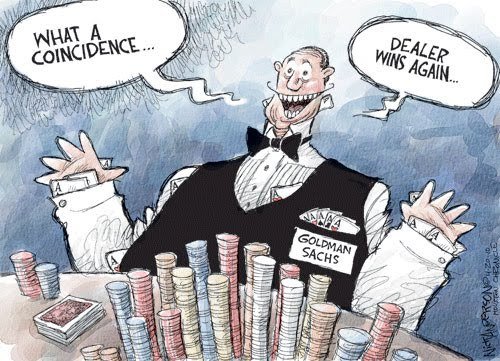How is Goldman Sachs doing well after the 2008 crisis?

Facts
A few important things to note about Goldman Sachs during the crisis. Firstly, Warren Buffet put $5 billion into Goldman Sachs in September 2008. Here’s how the deal was structured:
$5 billion worth of “perpetual” preferred shares. While technically a share of stock, preferred shares are a bit more like a bond. They’re slightly safer than “common” shares, because—should anything like a bankruptcy happen—preferred shareholders stand in front of common shareholders in the line to get their share of the proceeds from the garage sale of the liquidated company. They also typically pay a dividend. Goldman agreed to pay a 10% dividend on those preferred shares to Buffett, which cost Goldman about $500 million a year.
Warrants for 43.5 million additional shares. Warrants are similar to options. In this case they were the legal right to buy a stock at a particular price, which for Buffett was $115 per share. The deadline for exercising these warrants was Oct. 1, 2013.
Secondly, Goldman Sachs (like Morgan Stanley) was converted into a bank holding company by federal regulators, effectively closing the book on the stand-alone investment bank business model. By becoming banks, the firms were subject to greater scrutiny by federal regulators and were required to have more capital and take fewer risks than they did as investment banks.
Analysis
Warren Buffet only invested in Goldman because its recovery was so important to federal regulators, who also indicated they would’ve included the bank in the Troubled Asset Recovery Program (TARP) before Buffet invested (essentially limiting his downside). If you want to know who was backing the TARP and, indirectly, Warren Buffet’s investment, take a look in the mirror (assuming you pay U.S. tax - it’s also worth considering you finance Trump’s $2m / day NYC residence and his $50m / missile attacks on Syria - laying out facts, not taking a political stance).
The most disappointing aspect of all of it is that $1.6 billion of the disaster recovery, TARP, money went to executives in these banks. Lloyd Blankfein, president and chief executive officer of Goldman Sachs, took home nearly $54 million in compensation that year and the company's top five executives received a total of $242 million. Also, none of their executives faced jail time for their role in the crisis.
Conclusion
I would call the above a win for Goldman. Not so much for the American people.
On a side note, say goodbye to your net neutrality. Writing this answer is making me a little anarchistic, but it is insane that we are begging for basic rights while paying for billionaire bankers bailouts (…I say this as an ex-banker from Morgan Stanley).
Makes you a little sick to your stomach…and people are wondering why the world needs a decentralized financial system.
Excellent post!
@somesteamer - You may not realize that "excellent post" is considered to be spam, you used 71 similar phrases in your last 100 comments, I've replied to you 32 times before, you've received 1 flag, and the Steem Sincerity API shows a 76.30% spam score. Learn why this is spam and a few better ways to earn the support of the community when commenting.
@mmarkham - You can remove this comment and everyone can whitelist me from appearing in future posts.
Thanks for the article. So fiat will never benefit the common man.
Congratulations @mmarkham! You received a personal award!
Click here to view your Board of Honor
Congratulations @mmarkham! You received a personal award!
You can view your badges on your Steem Board and compare to others on the Steem Ranking
Vote for @Steemitboard as a witness to get one more award and increased upvotes!